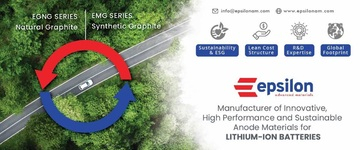A pioneering grid-scale battery storage project comes online in Hawaii
Plus Power, a US-based developer and operator of utility-scale battery storage projects, on Thursday announced that it has started operations of a pioneering grid-scale battery energy storage system – Kapolei Energy Storage (KES) facility – fast-tracking Hawaii's transition to 100% renewable energy.
What makes KES a landmark project is that for the first time, a standalone battery site will be providing a diverse range of grid-forming services at such a large scale. The KES battery facility is set to replace the grid capacity formerly provided by an AES coal power plant which once produced up to one-fifth of the electricity on the island of Oahu. The coal plant closed in September 2022.
"This is a landmark milestone in the transition to clean energy," said Brandon Keefe, Plus Power's Executive Chairman.
"It's the first time a battery has been used by a major utility to balance the grid: providing fast frequency response, synthetic inertia, and black start. This project is a postcard from the future — batteries will soon be providing these services, at scale, on the mainland."
The KES battery project is located on the southwest side of Oahu near Honolulu, and uses 158 Tesla Megapack 2 XL LFP batteries.
"It offers the grid 185MW of total power capacity and 565 MWh of electricity, acting as an electrical "shock absorber" often served by combustion-powered peaker plants — responding in the blink of an eye (250 milliseconds), rather than the several minutes it takes combustion plants to come online," Plus Power said in an official release.
According to Hawaiian Electric's modeling, in its first five years of operation, the KES battery plant will allow the utility to reduce curtailment of renewable energy by 69 percent and integrate 10 percent more new utility-scale renewables than previous models had allowed. This, in addition to enabling swifter growth of customer-owned renewables such as rooftop solar.
The Hawaiian Electric filing for KES estimates, the project will reduce electric bills by an average of $0.28 per month over a 20-year contract life.
"KES is an important part of a portfolio of resources that work together to provide reliability and energy security on Oahu's isolated island grid," said Jim Alberts, senior vice president and chief operations officer of Hawaiian Electric.
"Energy storage technology that responds quickly to constantly changing conditions is an essential tool for us to use to manage the grid and operate it as efficiently as possible."
























